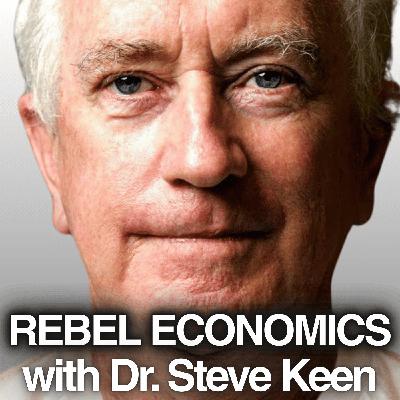“What’s next is worse than 1929 depression” Top Economist Warns
Description
Learn 50+ Years of Economics in Only 7 Weeks: apply at https://www.stevekeen.com
(Bonus: accepted students who join get Ravel — the double-entry, macro visualization tool used in this video.)
In this revealing video, Steve Keen takes us back to the 1929 Great Depression to show how similar economic conditions could lead us to another crisis. He critiques the conventional wisdom, explains why debt-fueled booms lead to catastrophic busts, and highlights a better way forward. Steve’s deep dive into private debt, inflation, and government spending offers a much-needed alternative perspective to mainstream economic thought.
Key Takeaways:
The True Cause of the Great Depression: How over-indebtedness and deflation triggered the collapse, and why we’re repeating these same mistakes today.
Fisher's Paradox: How the more debtors try to reduce their debt, the more they actually increase it, exacerbating economic downturns.
The Role of Private Debt: A detailed look at how high private debt, combined with low inflation, caused both the boom and bust of the 1920s and 1930s.
Lessons from History: What went wrong in the 1920s, how it led to the Great Depression, and why we still haven't learned from it.
Government Spending & Recovery: Steve shows why government intervention (like the New Deal) was key to stopping the economic collapse and why it’s critical to act similarly today.
What’s the Real Crisis?
Steve goes beyond the numbers to question whether we, as a society, are chasing the wrong crisis. With the UK and global economies facing mounting debt and the possibility of inflation spiraling out of control, it's time to ask: Are we truly prepared to face the same conditions that led to the Great Depression?
The Truth About Debt and Inflation
Steve dives deep into the data to debunk the myths surrounding the "debt crisis." According to Steve, private debt, not government debt, is the real problem, and it’s being ignored in the current economic debate. The rise in private debt since the 1980s, fueled by deregulation and a focus on asset price speculation, has led us to the point where the next financial collapse may be just around the corner.
Key Concepts Covered:
Fisher’s Paradox: The idea that debt reduction efforts can lead to increased debt burdens in times of deflation.
Private Debt vs Government Debt: How credit impacts the economy and why private debt is more dangerous than government debt.
Government’s Role in Recovery: Why government spending—especially deficit spending—is necessary to prevent a crisis.
Policy Solutions
Steve suggests three policy measures that could help avoid another Great Depression:
Limit Private Debt: Regulate lending to prevent asset price bubbles.
Government Spending: Use government debt to finance essential services and stop economic decline.
Debt Jubilees: Cancel or restructure private debt to prevent another financial collapse.
The Ravel Software Demonstration
Steve uses his proprietary Ravel software to demonstrate how the current financial system is designed to fail and what needs to be done to fix it. Using double-entry bookkeeping, he shows the difference between conventional economic models and the reality of how money and debt work in today's economy.
Critical Insights:
The Real Impact of Government Debt: The video challenges the conventional wisdom that government debt is the primary issue, arguing instead that private debt is the true threat.
The Danger of Deflation: Why deflation, combined with high private debt, could trigger a crisis that the government must prevent.
Revisiting Economic Theories: How Steve’s work challenges mainstream economic models and what needs to change.
Why We Need a Different Economic Model
Steve critiques the mainstream approach, which treats debt and inflation as isolated issues, showing that the real solution lies in understanding the relationship between debt, inflation, and credit. He argues that mainstream economists, stuck in outdated models, are blind to the true causes of economic instability.
Takeaway
With Steve’s insight into how we got here and what needs to change, you’ll gain a better understanding of the current financial system’s flaws and the steps we can take to fix them. The history of the Great Depression, combined with Steve’s groundbreaking ideas on monetary policy, provide a clear roadmap for navigating today’s financial instability.
Join the Rebel Economist Challenge
If you want to understand more about how the economy really works, join Steve’s Seven-Week Rebel Economist Challenge. Get access to Ravel software and learn from Steve himself as he dives deeper into economic analysis.
To apply, visit: https://www.stevekeen.com
#greatdepression #useconomy #usshutdown #MonetaryPolicy #Inflation #RavelSoftware #RebelEconomist #FinancialCrisis #DebtJubilee #BankingReform #MMT #FiscalPolicy #SteveKeen #PrivateDebt #economics





